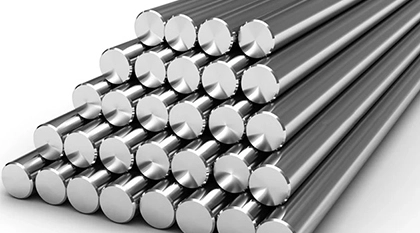Thank you for your
attention on Yesheng !
Titanium Filament Introduction
In the world of advanced materials, titanium filament stands out as a revolutionary development. Known for its exceptional strength-to-weight ratio, biocompatibility, and resistance to corrosion, titanium filament is becoming increasingly popular in various industries. This high-performance material offers unparalleled advantages, making it an ideal choice for applications ranging from aerospace to medical devices. This article delves into the key aspects of titanium filament, including its product features, applications, manufacturing technology, and market trends.
Product Features of Titanium Filament
The titanium filament is characterized by several unique features that set it apart from other materials. First and foremost, it boasts an impressive strength-to-weight ratio, which is essential for applications requiring high durability without added bulk. This property is especially beneficial in sectors like aerospace and automotive, where weight reduction is critical for performance and fuel efficiency.
Another outstanding feature of titanium filament is its resistance to corrosion. Unlike many metals, titanium does not react easily with environmental factors such as moisture and chemicals, making it ideal for use in harsh conditions. This property extends the lifespan of products made from titanium filament, reducing the need for frequent replacements and maintenance.
Biocompatibility is another significant feature of titanium filament. This means it is non-reactive with human tissues, making it suitable for medical applications such as implants and prosthetics. The ability to integrate seamlessly with the human body without causing adverse reactions opens up new possibilities in the healthcare field.
Moreover, titanium filament is known for its high melting point, making it suitable for high-temperature applications. This attribute is particularly useful in industrial settings where extreme heat resistance is required.
Applications of Titanium Filament
The versatile nature of titanium filament translates to its wide range of applications across various industries. In the aerospace sector, the material is utilized for constructing lightweight yet sturdy components such as turbine blades, airframes, and fasteners. These applications benefit from titanium's strength and resistance to both high temperatures and corrosion.
In the medical field, titanium filament is used to manufacture prosthetics, dental implants, and orthopedic devices. Its biocompatibility ensures that these medical devices can be implanted without causing adverse reactions. Furthermore, the material's durability and longevity are invaluable, providing patients with long-lasting solutions.
The automotive industry is another significant user of titanium filament. Here, it is employed to create components that contribute to vehicle weight reduction and improved fuel efficiency. Parts such as exhaust systems, springs, and engine valves made from titanium filament offer superior performance and durability.
Beyond these traditional applications, titanium filament is also making strides in the world of additive manufacturing, commonly known as 3D printing. Its properties make it an excellent candidate for producing intricate, custom-designed parts that require both strength and precision. This technology is opening new doors for rapid prototyping and small-batch production.
Manufacturing and Technology
The production of titanium filament involves several sophisticated processes to ensure its high quality and performance. It starts with the extraction of titanium from its ores, followed by a series of refinement stages to achieve the desired purity level. This refined titanium is then alloyed with other elements to improve specific properties such as strength, ductility, and thermal stability.
Once the alloying process is complete, the material is subjected to melt spinning or drawing techniques to produce thin, continuous filaments. Advanced control mechanisms ensure consistent diameter and quality throughout the production run. These processes are critical for applications that demand high precision and reliability.
Additive manufacturing or 3D printing technology plays a significant role in the application of titanium filament. Selective Laser Melting (SLM) and Electron Beam Melting (EBM) are popular methods, wherein the filament is melted layer by layer to create complex shapes and structures. This technique is highly efficient, reducing material waste and enabling the production of intricate designs that would be impossible to achieve with traditional manufacturing methods.
Market Trends and Industry Analysis
The market for titanium filament is experiencing robust growth, driven by increasing demand from key industries such as aerospace, healthcare, and automotive. The aerospace sector remains the largest consumer, fueled by ongoing advancements in aircraft design and the need for lightweight, durable materials. Similarly, the medical industry's shift towards more biocompatible materials for implants and devices is propelling the demand for titanium filament.
Technological advancements in 3D printing are also contributing to the market expansion. The ability to produce custom, high-precision components using titanium filament is attracting attention from various sectors looking for innovative manufacturing solutions. This trend is expected to continue, with more companies exploring the benefits of additive manufacturing.
From a geographical perspective, North America and Europe are leading the adoption of titanium filament, owing to their advanced aerospace and healthcare industries. However, emerging economies in Asia-Pacific are quickly catching up, driven by robust industrial growth and increasing investments in research and development.
In terms of challenges, the high cost of titanium and its processing can be a limiting factor. However, ongoing research and technological innovations are aimed at reducing these costs, making titanium filament more accessible to a broader range of applications.
Titanium filament is a game-changing material with a wide array of applications across various industries. Its exceptional properties such as high strength-to-weight ratio, corrosion resistance, and biocompatibility make it an ideal choice for demanding environments. With ongoing advancements in manufacturing technology and increasing market demand, the future of titanium filament looks promising. As industries continue to explore its potential, titanium filament is set to play a crucial role in shaping the next generation of high-performance materials.
 English
English  日本語
日本語  한국어
한국어  français
français  Deutsch
Deutsch  русский
русский 























































































